Rainbowfish are a family of small, vibrantly colored tropical freshwater fish originating from Australia, Madagascar, New Guinea, and Sulawesi.
There are thought to be over 100 varieties of these gorgeous fish to choose from, and they can make a dazzling centerpiece in any community aquarium.
But what fish species make the best tank mates for Rainbowfish?
Read this guide to find out!
How Do I Choose the Best Tank Mates for Rainbowfish?
Before you decide what fish you want to add to your community as tank mates for your Rainbowfish, you need to consider several important factors.
Tank Size
The first thing to consider is how many fish you can fit into your tank.
The general rule of thumb for tank stocking is to allow 1 inch of fish per 1 gallon of water. However, you need to factor in the space taken up by your substrate, decorations, plants, etc. Remember, too, that most fish sold in fish stores are juveniles that will grow as they mature.
The dimensions of your aquarium are also important.
For example, fish that need access to the water’s surface to breathe and feed do better in a shallower, wide aquarium than in a tall, deep one. Shoaling fish, such as danios, need a tank with plenty of swimming space.
Water Parameters
It’s vital that the fish species you choose for your community aquarium all share the same or very similar demands when it comes to water parameters, such as temperature, pH, and general hardness.
If you try to keep fish in unsuitable conditions, you risk stressing the fish, which could lead to disease outbreaks.
Diet
Although it’s possible to keep fish that prefer different diets, it’s much easier and more cost-effective if all the fish eat a similar diet of basic tropical flakes and frozen meaty proteins.
Habitat
Your fish are more likely to thrive if you keep them in a tank that closely mimics their natural habitat.
Usually, stones, driftwood, tangled roots, and caves work well for most species. Territorial types can mark out a territory, while shyer species and nocturnal fish can use plants, caves, and hardscaping to hide or rest in.
Age and Size
Generally, juvenile fish are pretty laid back and can blend well with various tank mates. However, some species become aggressive as they mature. That said, often, if the fish are housed together from babies, they coexist fine.
The fish you buy in fish stores are usually young stock. Do some research to determine how big the fish will be as adults.
If some of the fish species you choose are semi-aggressive and are likely to grow large enough to eat the smaller ones, you could have a problem in the future.
Fish Behavior
When choosing fish to live in a community setup, it’s vital to understand the normal behavior of each species. You can avoid problems by choosing peaceful species that get along well with most other types. However, sometimes, a couple of semi-aggressive fish can work well in the mix, too.
If you’re not sure what species will work well together, ask the experts in your local fish store for advice.
One important factor to be aware of is that male fish are generally more aggressive and territorial than females, especially when spawning. For that reason, you might need to keep a certain ratio of males to females to prevent fighting.
If you keep livebearers, we recommend keeping a ratio of one male to three females to diffuse the persistent hassle of males.
About Rainbowfish (Melanotaeniidae)
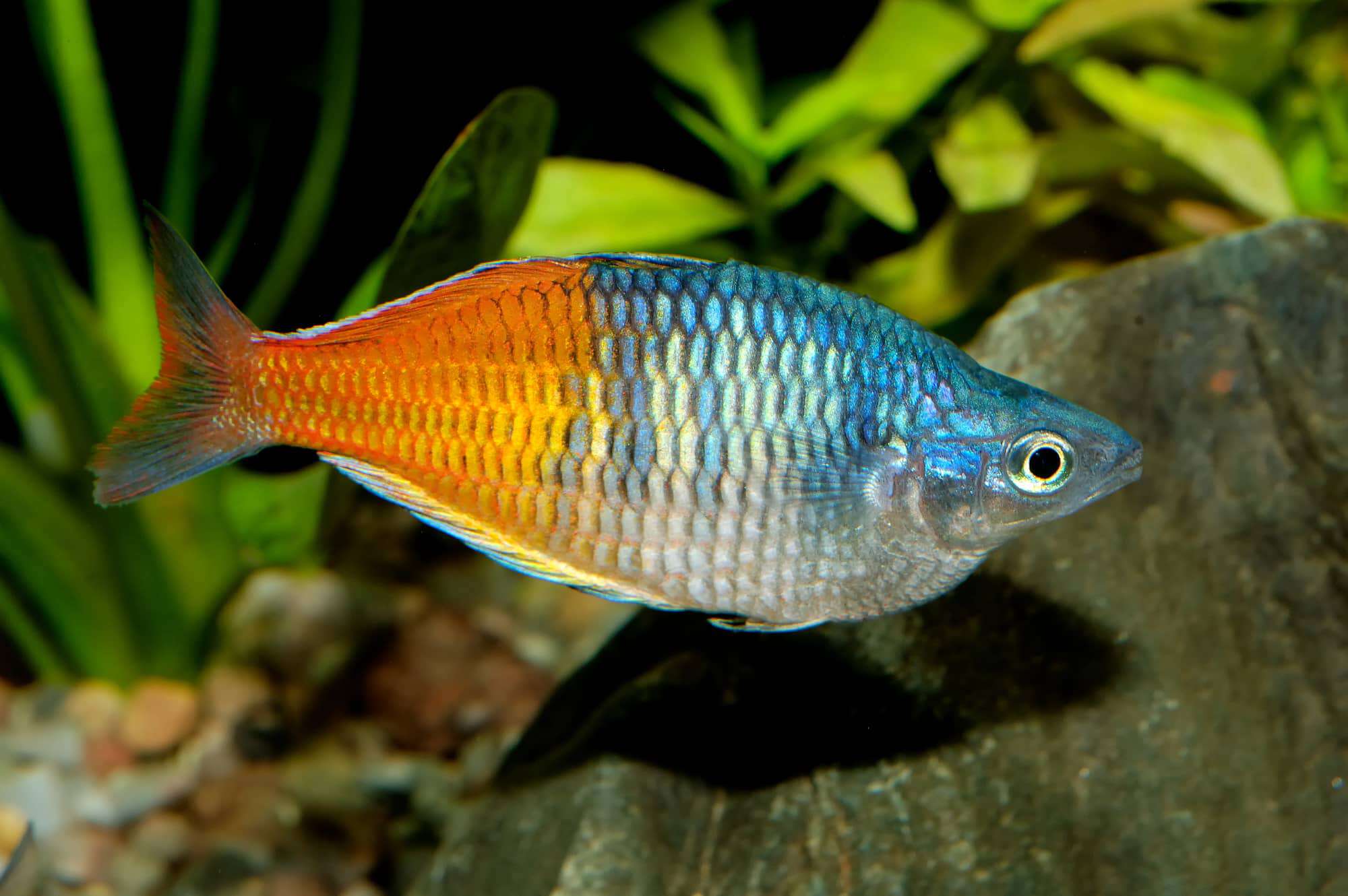
So, before you begin building your community, you need to know a bit about Rainbowfish and their requirements.
- Water temperature: 74° to 78° F
- Lifespan: 4 to 5 years
- Care level: Beginner
- Temperament: Peaceful
- Size: 5 to 8 inches
As mentioned above, Rainbowfish come from Australia, Madagascar, New Guinea, and Sulawesi. Here, the fish live in lakes, streams, swamps, and rivers where the current is generally quite fast.
Rainbowfish are peaceful omnivores that must live in shoals of at least six individuals. During the spawning season, it’s the male Rainbowfish that display the brightest colors.
12 Perfect Rainbowfish Tank Mates
So, what fish get along well with Rainbowfish in a community tank?
Here are 12 beginner-friendly fish species that can make good tank mates with Rainbowfish.
Hillstream Loach (Balitoridae)
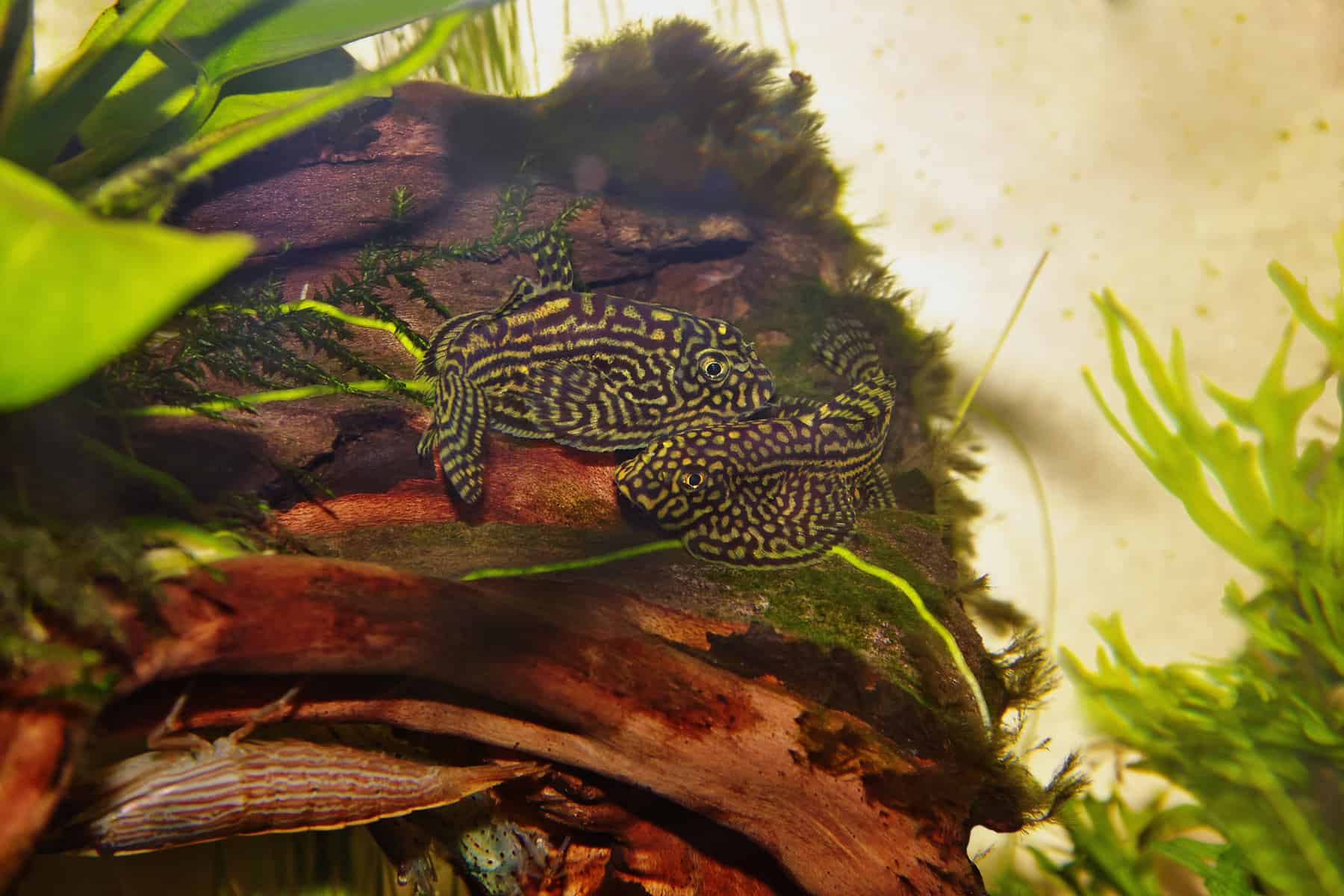
- Water temperature: 68° to 75° F
- Lifespan: 8 to 10 years
- Care level: Beginner
- Temperament: Peaceful
- Size: 2 to 3 inches
Hillstream loaches are bottom-dwelling fish that can do fine with Rainbowfish.
They share similar water parameters and are peaceful creatures that live happily attached to a piece of driftwood or stone via their suction-cup mouths.
These popular fish come from tropical waters in Cambodia, Laos, and Vietnam, where they live in fast-flowing rivers.
Hillstream loaches eat a varied diet of insect larvae, daphnia, tubifex, and brine shrimp. They also like fish flakes and algae wafers
These fish can help to keep your tank tidy by grazing on biofilm and algae in your tank.
Gold Barbs (Barbodes semifasciolatus)
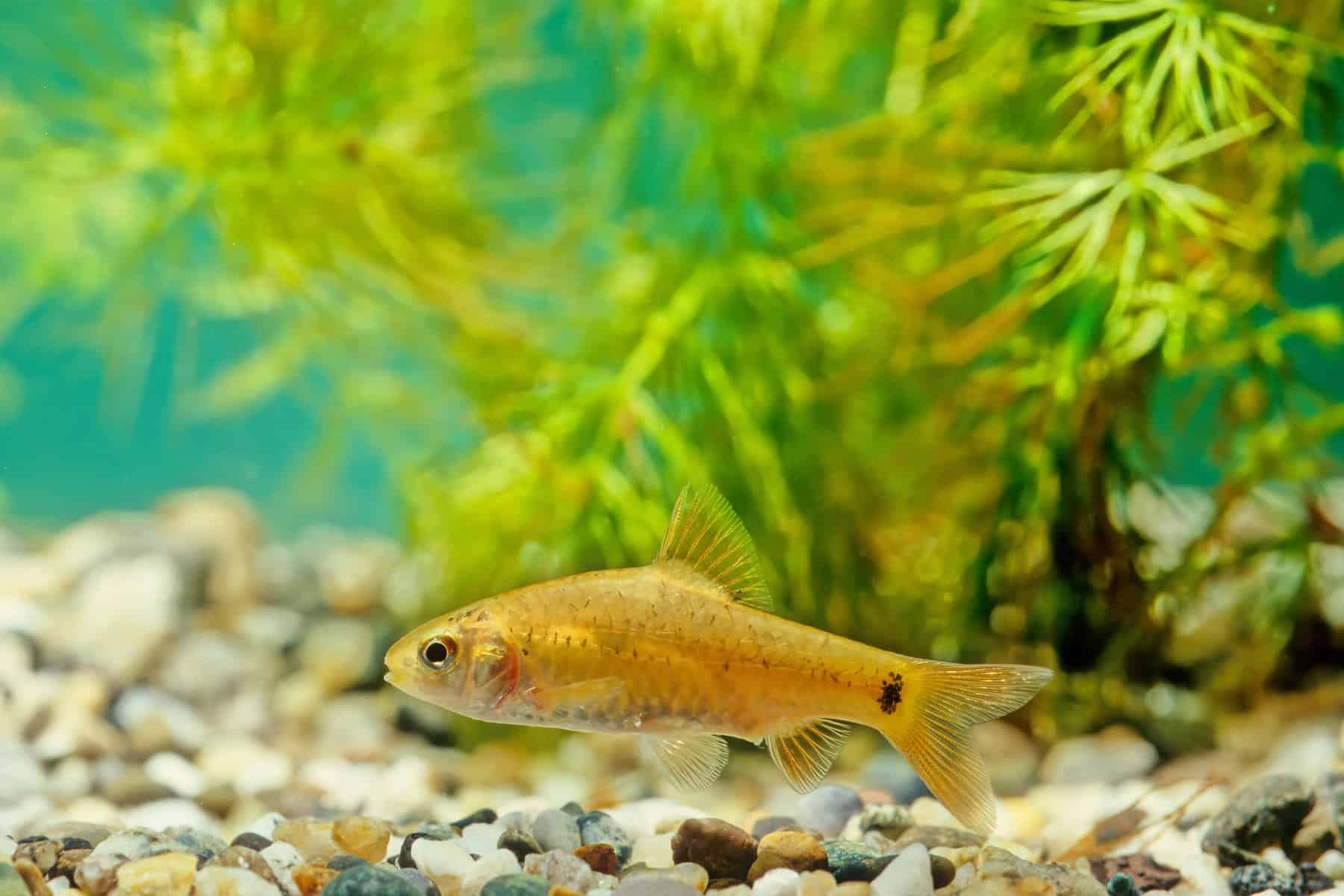
- Water temperature: 64° to 75° F
- Lifespan: 4 to 6 years
- Care level: Beginner
- Temperament: Peaceful
- Size: 3 inches
Gold barbs are an unusual choice of barb that can do well in a community with Rainbowfish and can go some way to out-dazzling them, too!
These beautiful little fish are native to Thailand, China, and Vietnam and are sometimes called the Chinese barb. Like Rainbowfish, Gold barbs enjoy a fast current in their habitat.
These fish should be kept in groups of at least six individuals, making an eye-catching, active addition to a peaceful community aquarium.
Bristlenose Pleco (Ancistrus cirrhosis)
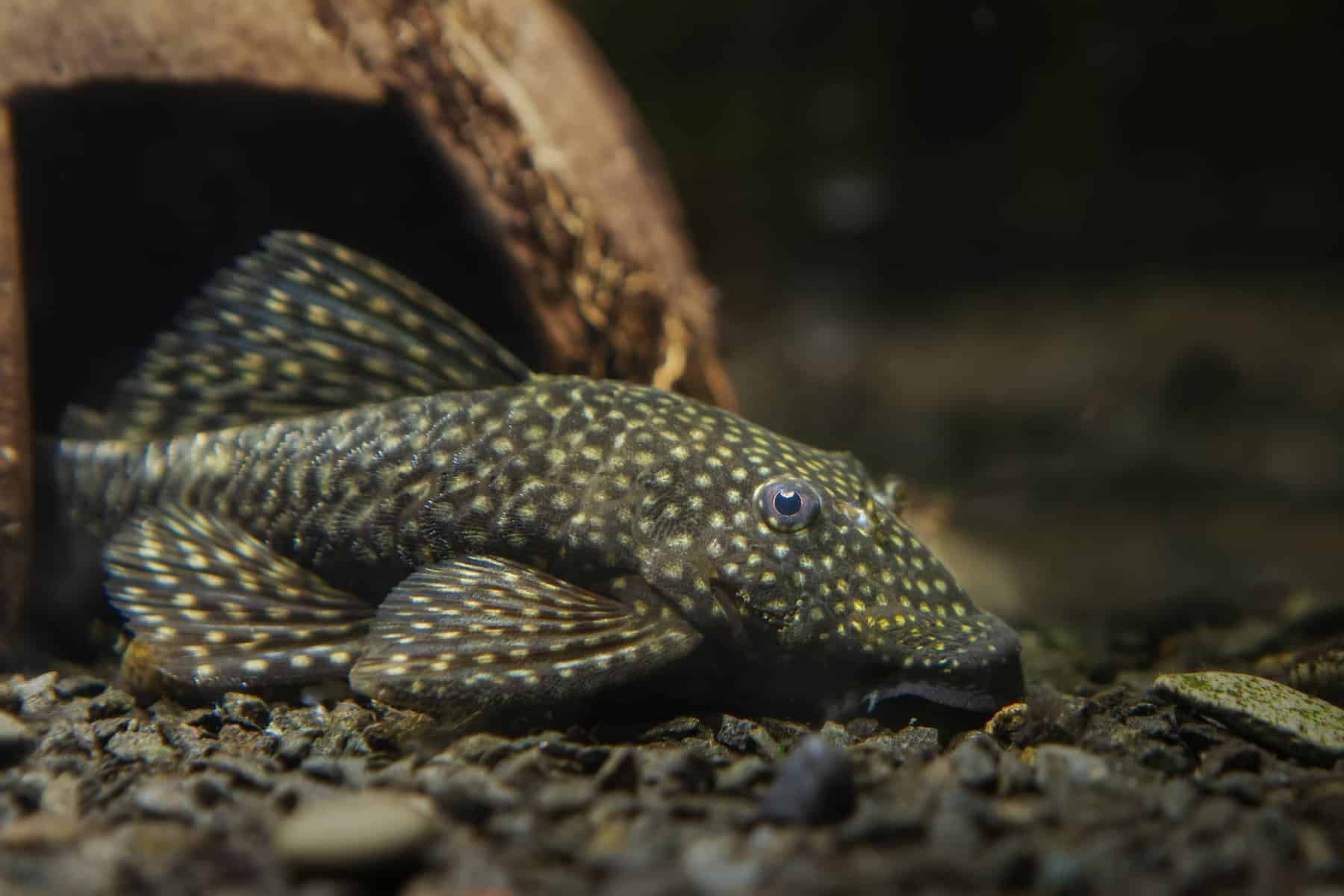
- Water temperature: 73° to 80° F
- Lifespan: 10 to 15 years
- Care level: Beginner
- Temperament: Peaceful
- Size: 4 to 5 inches
Bristlenose plecos make an unusual addition to a peaceful community tank. These weird-looking fish are native to river tributaries of the Amazon basin.
These bottom-dwellers are easy to care for, provided you cater to their diet by providing pleco wafers and fresh vegetables for them to eat, as well as some frozen meaty proteins.
Bristlenose plecos eat algae and help keep your tank looking clean and tidy by grazing on the green stuff throughout the night.
Zebra Danio (Danio rerio)
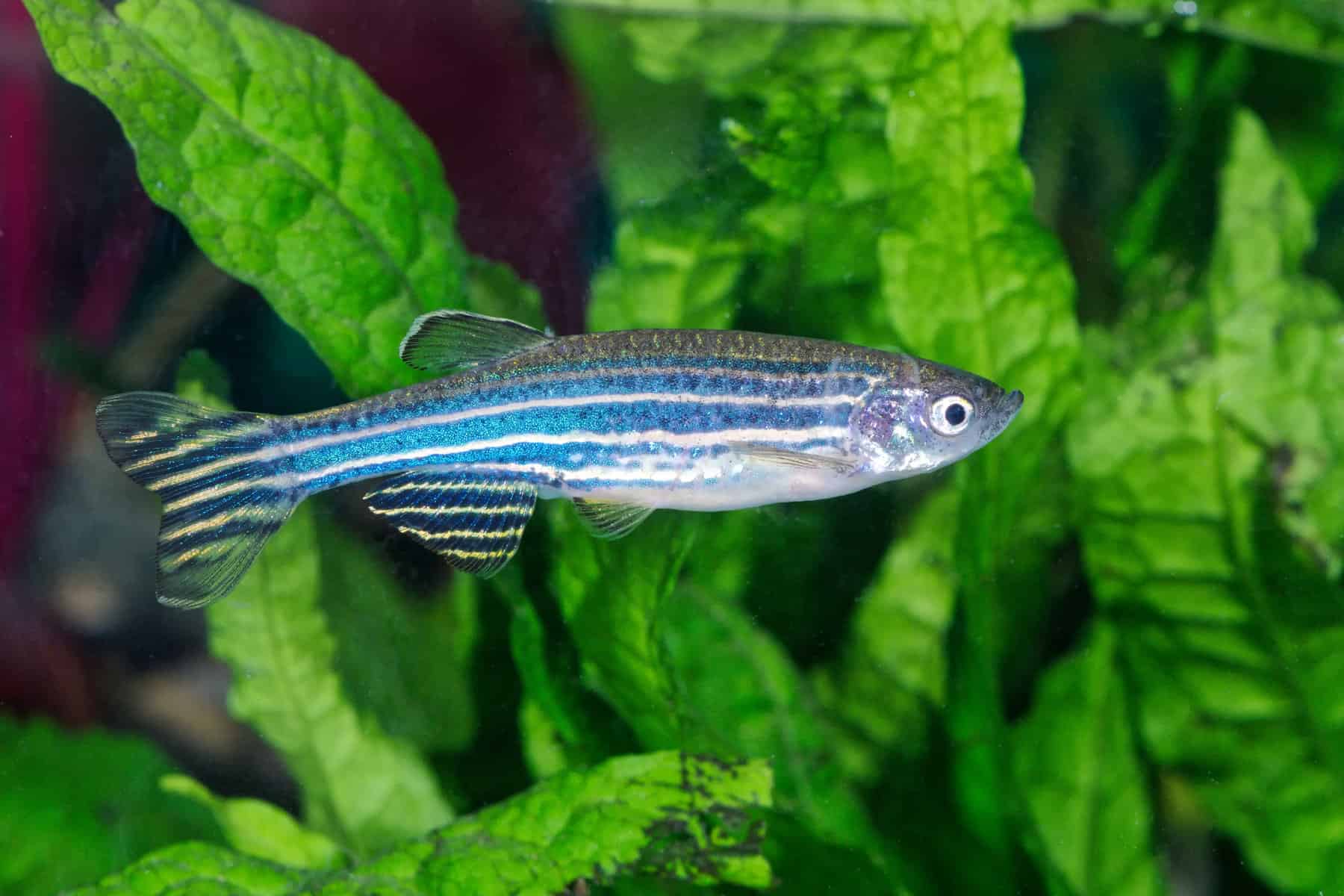
- Water temperature: 65° to 75° F
- Lifespan: 5 years
- Care level: Beginner
- Temperament: Peaceful
- Size: 2 inches
Zebra danios are popular little fish that originate from rivers and streams in South Asia.
These black and white striped fish are suitable for life in a nano tank with other peaceful small fish species that won’t try to make a meal of the danios.
Alternatively, these shoaling fish look best when kept in larger tanks in groups of six or more.
Danios are omnivorous, sharing a very similar diet to that of Rainbowfish.
Dwarf Gouramis (Trichogaster lalius)
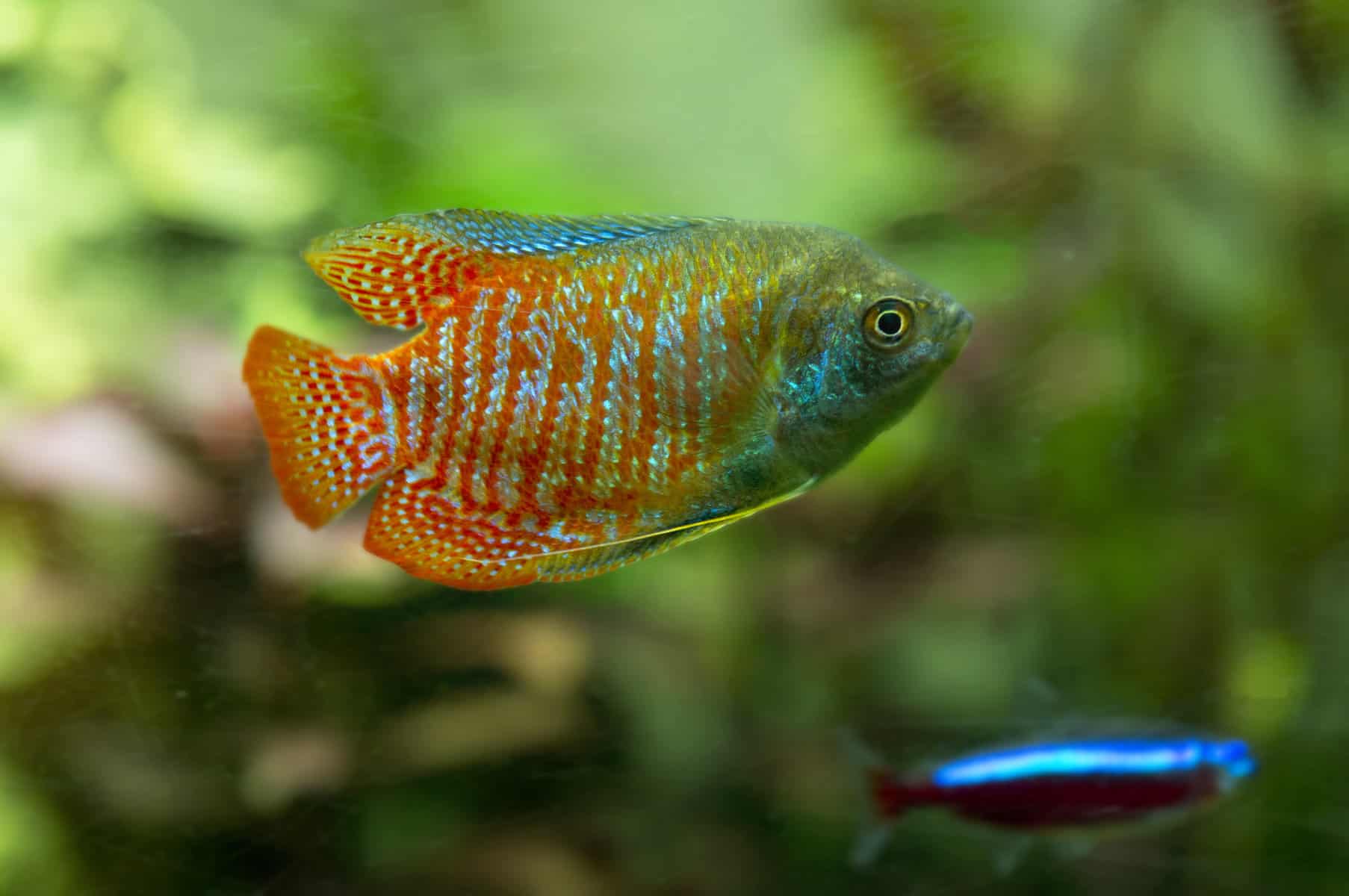
- Water temperature: 72° to 82° F
- Lifespan: 4 to 6 years
- Care level: Beginner
- Temperament: Peaceful
- Size: 3.5 inches
Dwarf gouramis are native to Southern and Eastern Asia. These attractive, peaceful fish are happy when kept in small groups or in pairs, and their bright blue color makes a beautiful addition to any community tank.
Gouramis are labyrinth fish. That means the fish can breathe atmospheric air from the water’s surface through a special labyrinth organ, enabling the fish to survive in oxygen-deprived, stagnant water.
Before you buy these charming fish, you need to bear in mind that males can be quite aggressive toward each other. For that reason, it’s best to keep only one male with a group of females.
Denison Barb (Sahyadria denisonii)
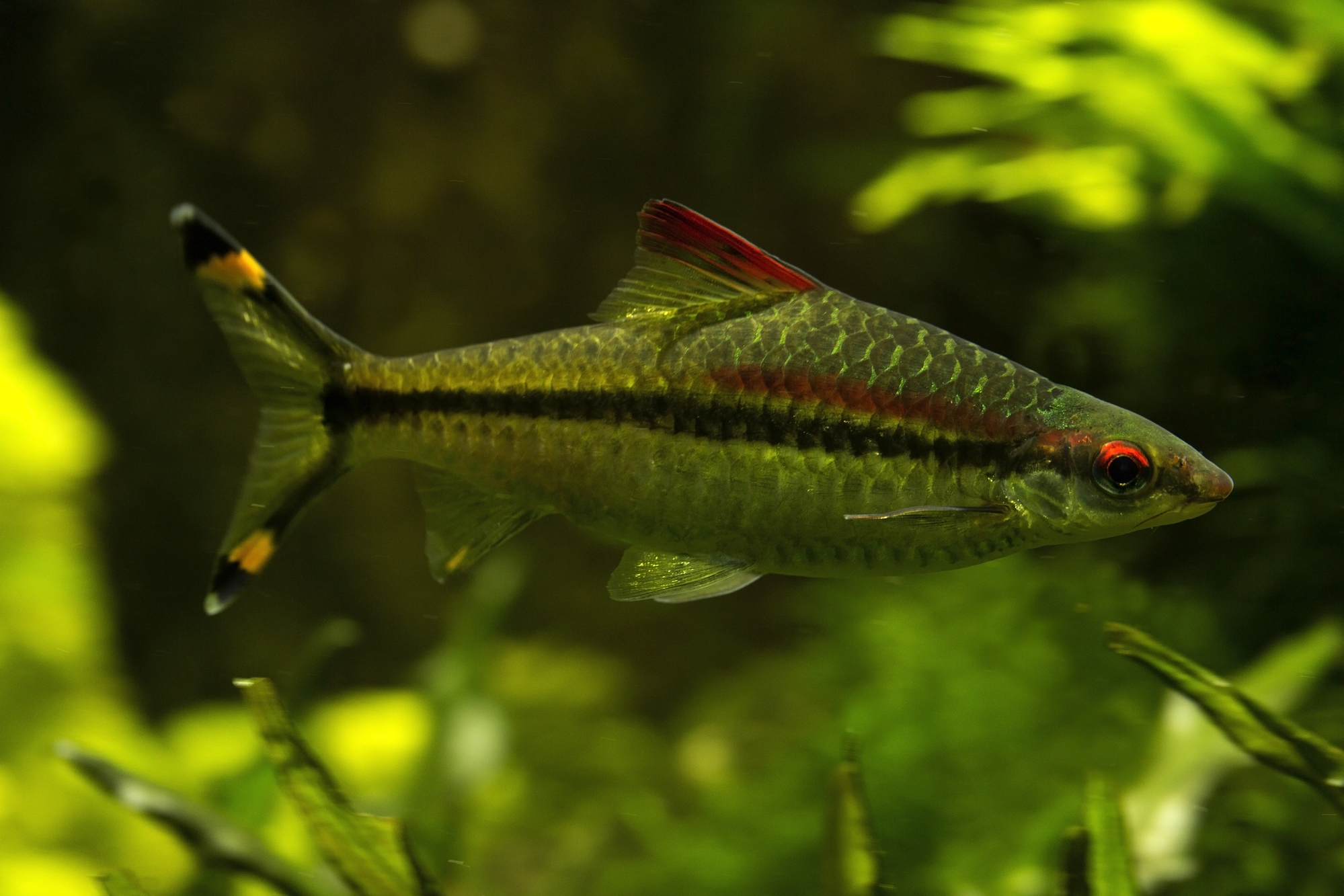
The Denison barb, Denison’s barb, Miss Kerala, red-line torpedo barb, or roseline shark (Sahyadria denisonii).
- Water temperature: 65° to 79° F
- Lifespan: 5 years
- Care level: Beginner
- Temperament: Peaceful
- Size: 3.5 to 4.3 inches
Denison barbs come from several regions in India where the fish inhabit pools, fast-flowing streams, and other water bodies where the dissolved oxygen levels are high.
These fish enjoy an environment where the flow is pretty strong since they love to swim against the current, replicating conditions in their wild habitat.
These striking fish make eye-catching, peaceful community members and are suitable for a beginner to the hobby.
Denison barbs do best when kept in a large tank in a big shoal.
Corydoras Catfish (Corydoras paleatus)
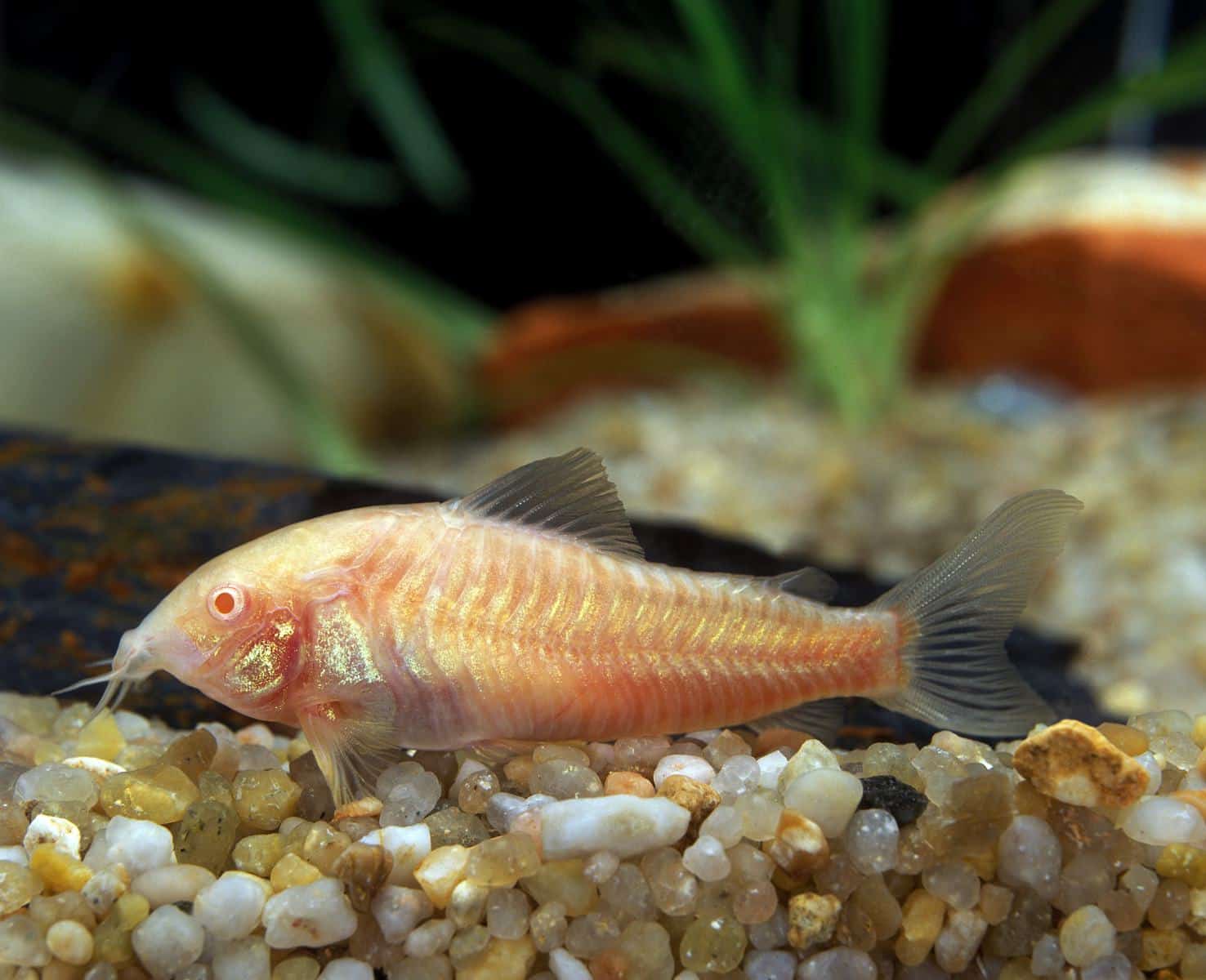
- Water temperature: 61° to 75° F
- Lifespan: 5 years
- Care level: Beginner
- Temperament: Peaceful
- Size: 1 to 4 inches
There are around 160 different species of Corydoras catfish, so there are plenty to choose from!
These characterful little fish are incredibly popular in the hobby, partly because they are super-cute but also because they are extremely easy to care for.
Corys are peaceful bottom-dwelling fish that spend much of their time foraging around on the substrate and darting up to the surface every now and then to grab a gulp of air.
You need to keep Corydoras catfish in groups of five or more of the same species. However, you can keep Corys with most other fish species in a community tank.
Angelfish (Pterophyllum scalare)
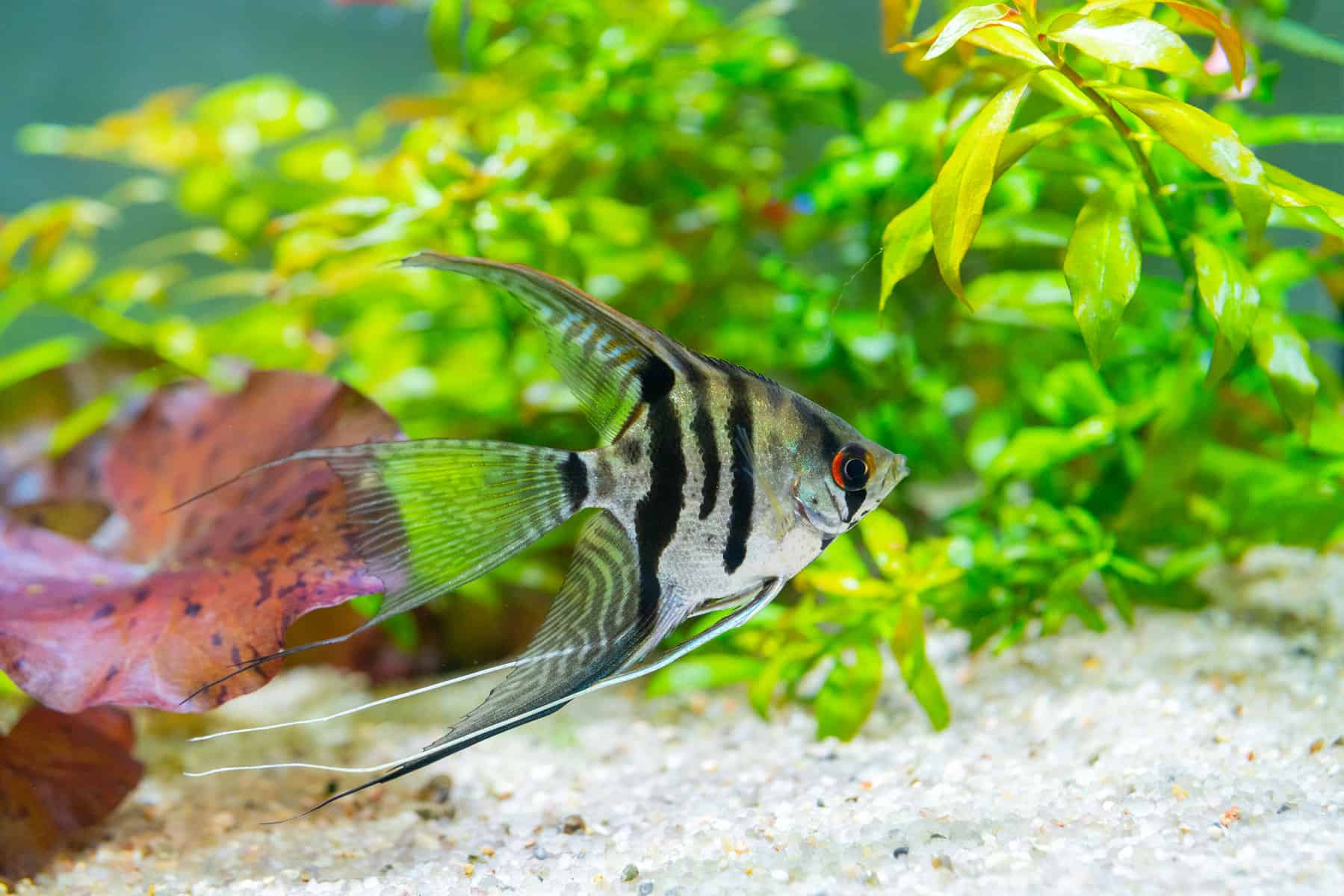
- Water temperature: 78° to 84° F
- Lifespan: up to 10 years
- Care level: Beginner
- Temperament: Peaceful
- Size: 6 inches
Angelfish come from South America, where they live in dimly lit, heavily vegetated waters where the flow rate is low.
These peaceful cichlids are usually labeled as being “semi-aggressive” by fish stores because the fish have a habit of chasing each other.
However, that territorial behavior generally manifests itself when the fish are spawning. Males spar with each other over females and female fish defend their eggs and fry.
Usually, you can safely keep up to four angelfish in a mixed community tank with suitable tank mates.
Kribensis (Pelvicachromis pulcher)
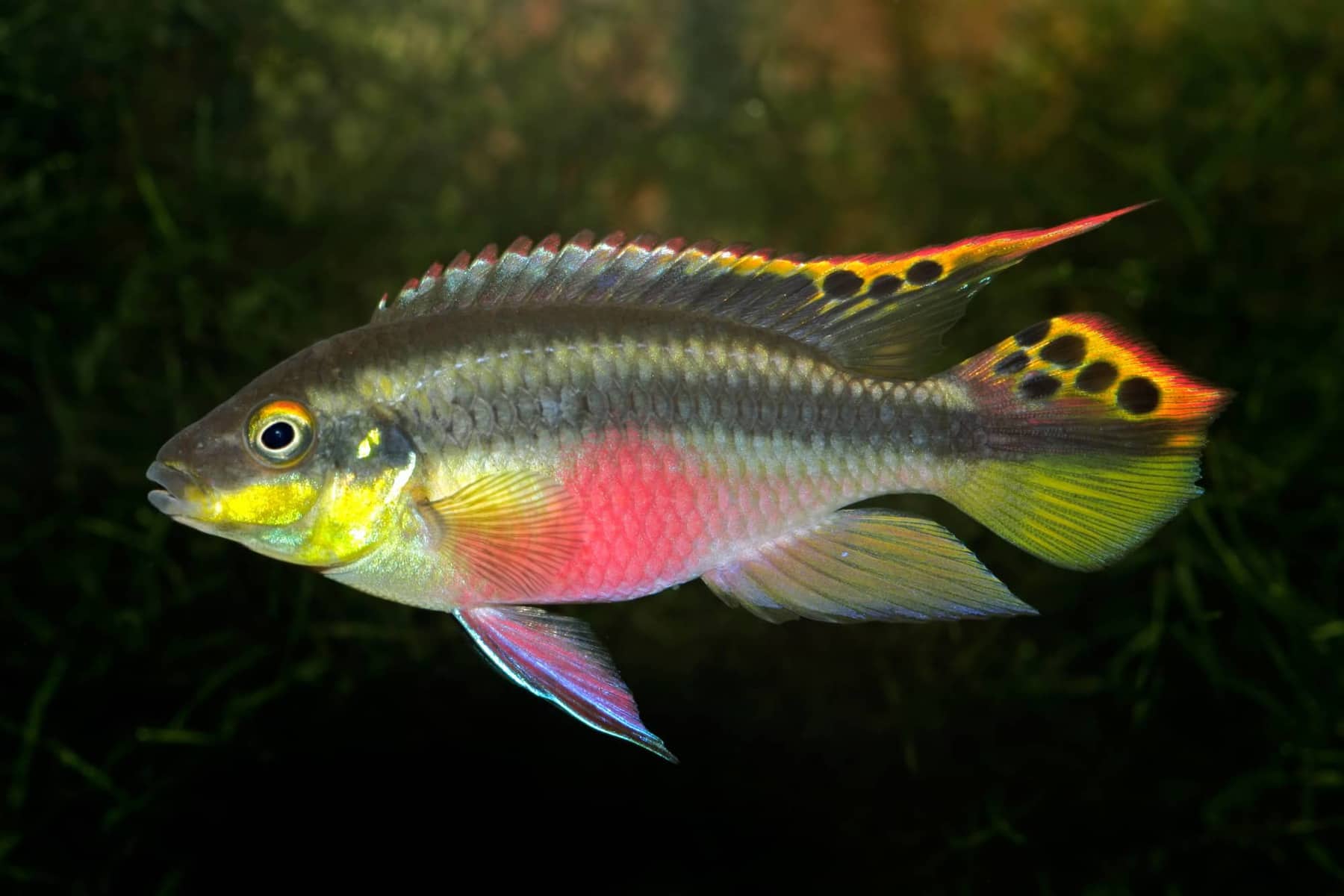
- Water temperature: 72° to 79° F
- Lifespan: up to 5 years
- Care level: Intermediate
- Temperament: Peaceful
- Size: 3 to 4 inches
Kribensis are a charming species of dwarf cichlid that can get along with Rainbowfish, provided you have a large enough tank that the fish can claim their own area of the tank when spawning.
I recommend keeping a breeding pair of Kribs, as these popular fish are affectionately known in the hobby. It’s lovely to watch a pair of Kribensis performing their elaborate courtship before spawning.
Once mating has taken place, the female fish chooses a suitable cave or digs a scrape underneath a piece of wood where she lays her eggs. The female then disappears for a week or so until the eggs hatch, and the fry is free-swimming.
Throughout that time, the male Kribensis patrols the area outside the nest to guard it.
When the female and her babies emerge from the nest, the male escorts his family around the tank, continuing his guarding duties.
Fancy Guppies (Poecilia reticulata)
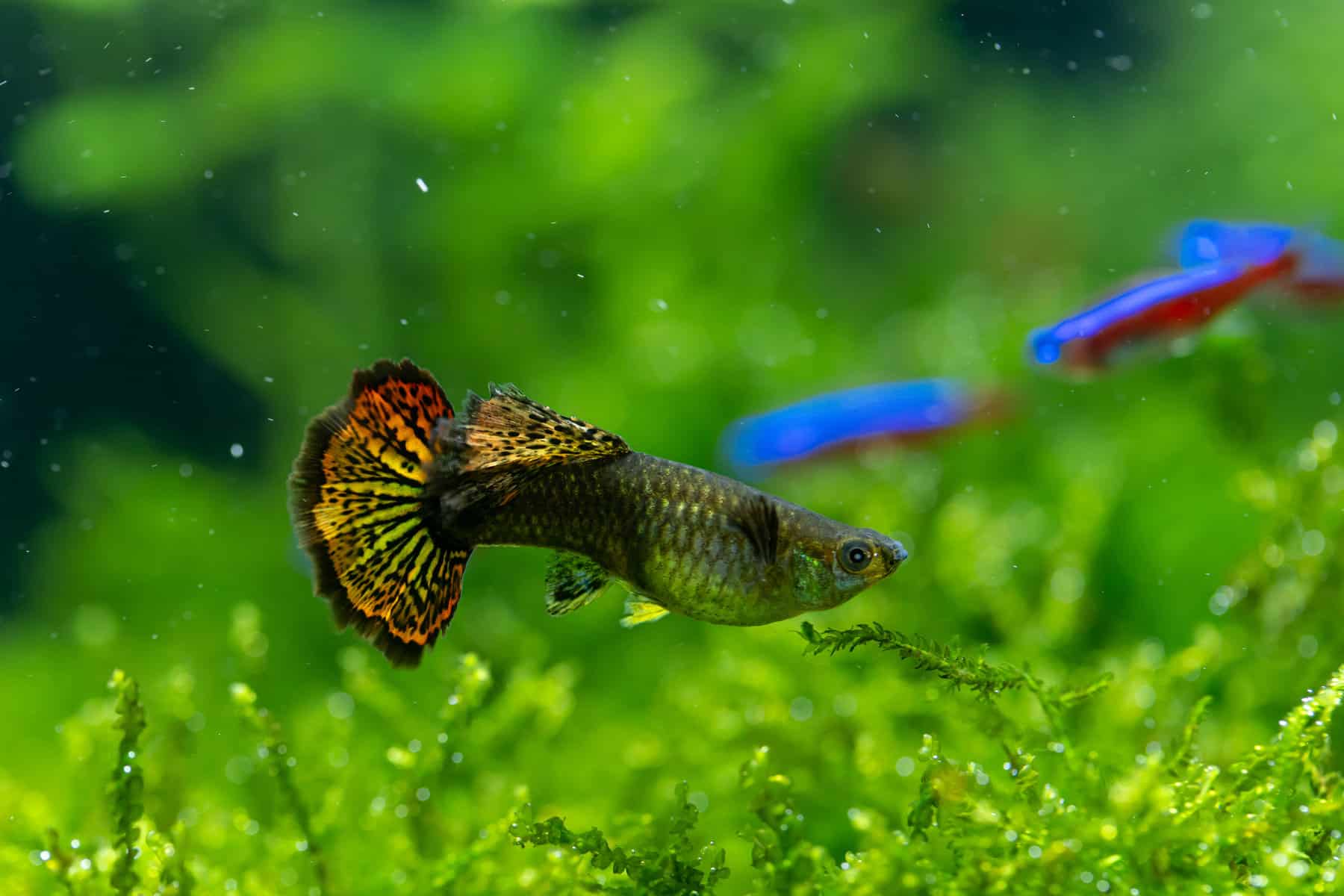
- Water temperature: 72° to 82° F
- Lifespan: 2 to 3 years
- Care level: Easy
- Temperament: Peaceful
- Size: 1.4 to 2.4 inches
Most aquarists have kept guppies at some point in their career!
Guppy fishes are extremely easy to care for and make a bright, colorful addition to a community tank. There are estimated to be 276 different species of guppies, many of which are available to hobbyists.
The main issue with guppies is that they are prolific breeders. That’s good news if you have a big tank and you want to fill it with fish since you will be provided with a constant flow of guppy fry from day one!
However, you need to have the right balance of males to females to prevent the female guppies from being hassled by amorous males.
Ideally, you want one male guppy for every three females. That ratio helps to prevent the female fish from becoming stressed, which can lead to disease outbreaks and a shortened life expectancy.
Mollies (Poecilia sphenops)
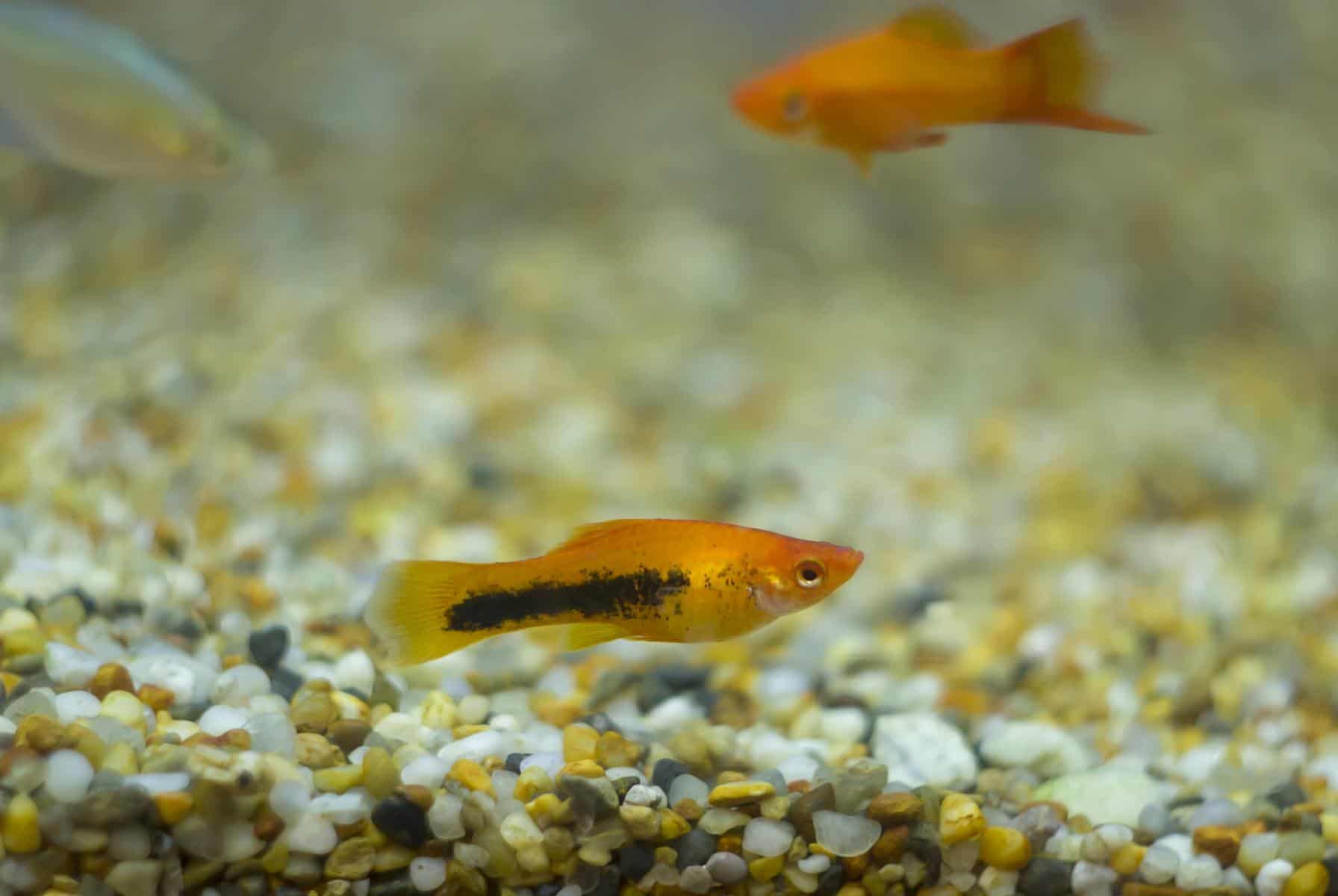
- Water temperature: 75° to 80° F
- Lifespan: 3 to 4 years
- Care level: Easy
- Temperament: Peaceful
- Size: 3.5 to 6 inches
Molly fish come from North and South America and have been a regular sight in the hobby for many years.
There are many different species of Mollies to choose from, offering a wide range of colors and forms that can add plenty of interest to your community tank.
These are peaceful, active fish that can get along well with your Rainbowfish, provided that your tank is not overcrowded.
Like guppies, Molly fish are livebearers that constantly reproduce if you provide them with the optimum conditions and a high-quality diet.
However, if you have omnivorous or carnivorous fish in your setup, they will probably eat some of the fry, helping to prevent a population explosion.
Tropical Freshwater Snails
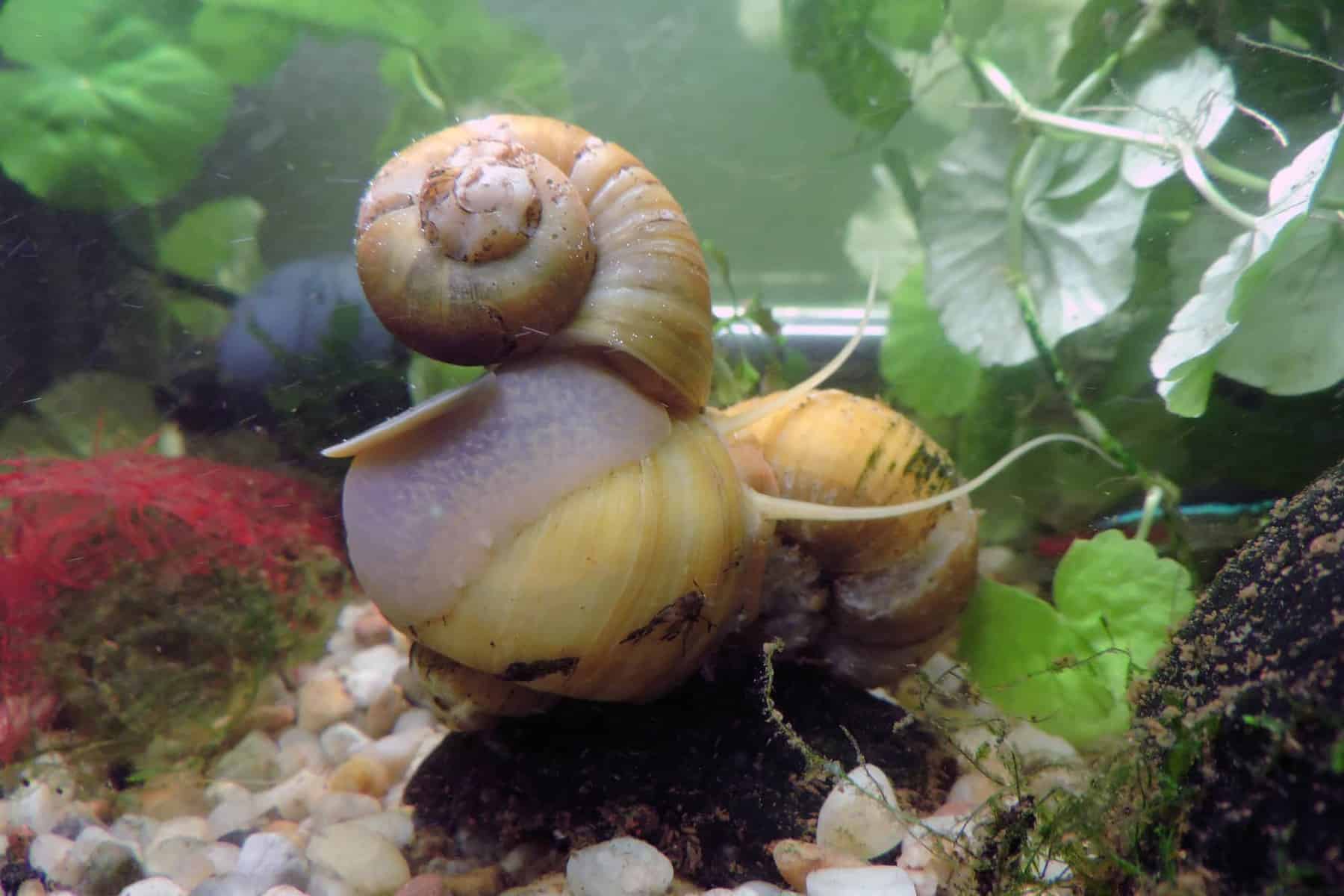
- Water temperature: 65° to 83° F
- Lifespan: 1 to 2 years
- Care level: Easy
- Temperament: Peaceful
- Size: Depends on the species
If you want a peaceful creature that can get along with all your community members, look no further than freshwater aquatic snails!
There are lots of species of tropical aquatic snails that can make an attractive addition to your setup.
In addition, snails can help you by grazing on nuisance algae, leftover food, and general detritus, keeping your aquarium tidy, and relieving the burden on your biological filter.
FAQs
Here are a few questions asked by people looking for suitable tank mates for their Rainbowfish.
Q: Are Angelfishes Compatible With Rainbowfish?
A: Yes, you can keep Rainbowfish with angelfish.
Male angelfish can become territorial during spawning, so it’s a good idea to provide them with a suitable hardscape that allows the fish to claim territory to defend. We also recommend keeping a maximum of four angelfish in a community tank to avoid possible confrontations.
Q: Can a Rainbow Shark and an Angelfish Live Together?
A: We don’t recommend keeping angelfish and a Rainbow shark in the same tank. Unfortunately, Rainbow sharks can be fin nippers and are often attracted by the angelfish’s trailing filamentous finnage.
Final Thoughts
I hope you enjoyed our guide to 12 tank mates for your Rainbowfish. If you loved the article, please share it before you go!
From graceful, slow-moving Angelfish and active, brightly-colored nano fish, such as guppies and Mollies, to a helpful cleaning crew of snails, there are plenty of creatures to choose from.
Have fun creating the perfect community setup with the glamorous Rainbowfish as the central feature fish!


